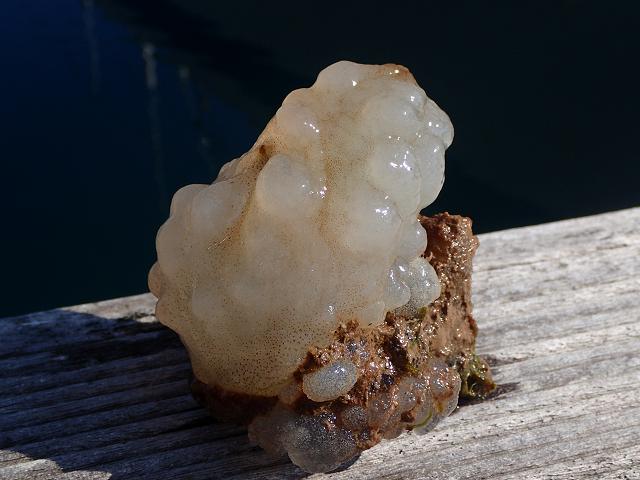
APHOTOMARINE
An educational resource dedicated mainly to the photography
and diversity of marine life that can be found in coastal waters
and intertidal areas of Great Britain and Ireland by David Fenwick.

Phallusia mammillata (Cuvier, 1815) - Neptune's Heart or White sea squirt (Tunicate images)
Scroll down and rollover titles to change screen image or click on title to view image.
Neptune's heart sea squirt
Phallusia mammillata
- out of water 1
Phallusia mammillata
- out of water 1
Neptune's heart sea squirt
Phallusia mammillata
- in container 1
Neptune's heart sea squirt
Phallusia mammillata
- in container 2
Neptune's heart sea squirt
Phallusia mammillata
- siphon 1
Neptune's heart sea squirt
Phallusia mammillata
- siphon 2
Neptune's heart sea squirt
Phallusia mammillata
- on pillar / underwater 1
Neptune's heart sea squirt
Phallusia mammillata
- on pillar below low tide mark 1
Neptune's heart sea squirt
Phallusia mammillata
- habitat / location 1
Specimens above found on pontoons and pillars at Torquay Marina, Torquay, Devon, 11.07.18.
Neptune's heart sea squirt
Phallusia mammillata
- lateral view 1
Neptune's heart sea squirt
Phallusia mammillata
- lateral view 2
Neptune's heart sea squirt
Phallusia mammillata
- dissected in half 1
A rather large sea squirt, specimen here about 100mm across. Specimen found by a diver during the MBA Bioblitz at Salcombe, Devon. 27.09.15.
The nemertean Vieitezia luzmurubeae, which can be found in and around Ciona intestinalis, Phallusia mammilata and Dendrodoa grossularia was found to be present in a sample of Phallusia mammilata taken from Torquay Marina on the 11.07.18, this makes it the first record of the nemertean in Devon, and first time it has been found in Phallusia mammilata in the UK. When Vieitezia luzmurubeae was first described in 2010 it was described as being associated with Ciona intestinalis and Phallusia mammilata.

The main objective of this website is in furthering environmental awareness and education through the medium of photography. To increase awareness and access to the wildlife of the region and help
people find and identify it. Sometimes the difference between species is obvious but many species can only be determined by observing microscopic characteristics that are specific to any one species.